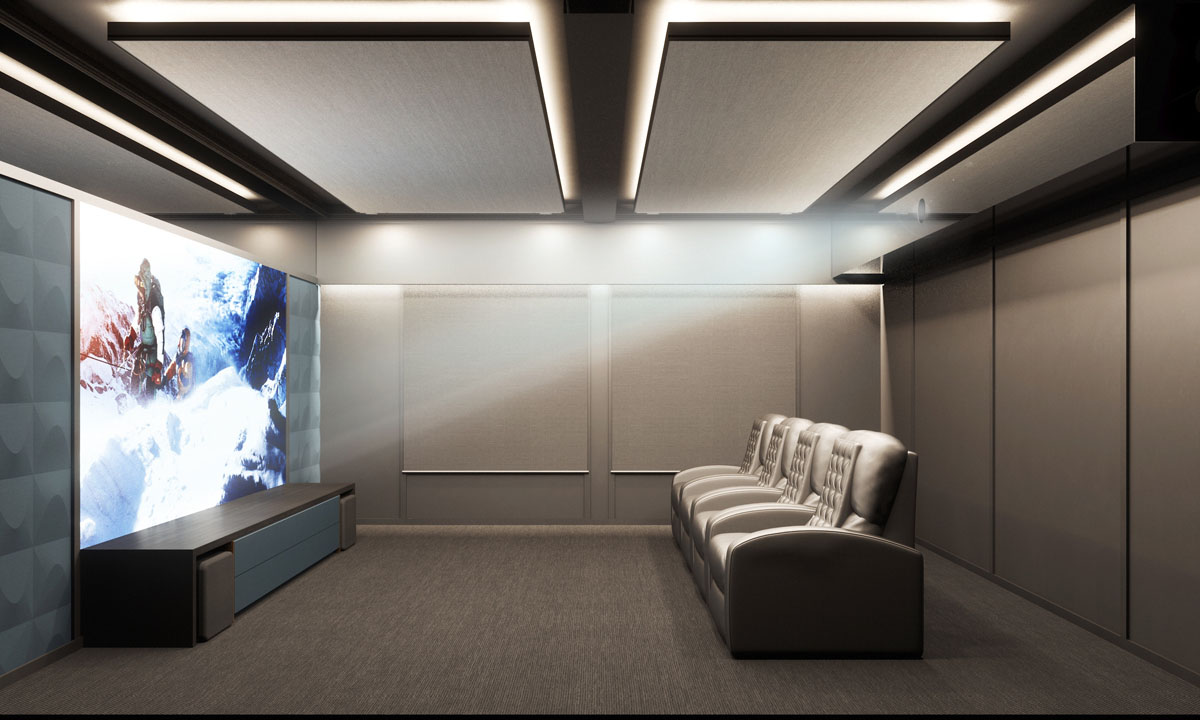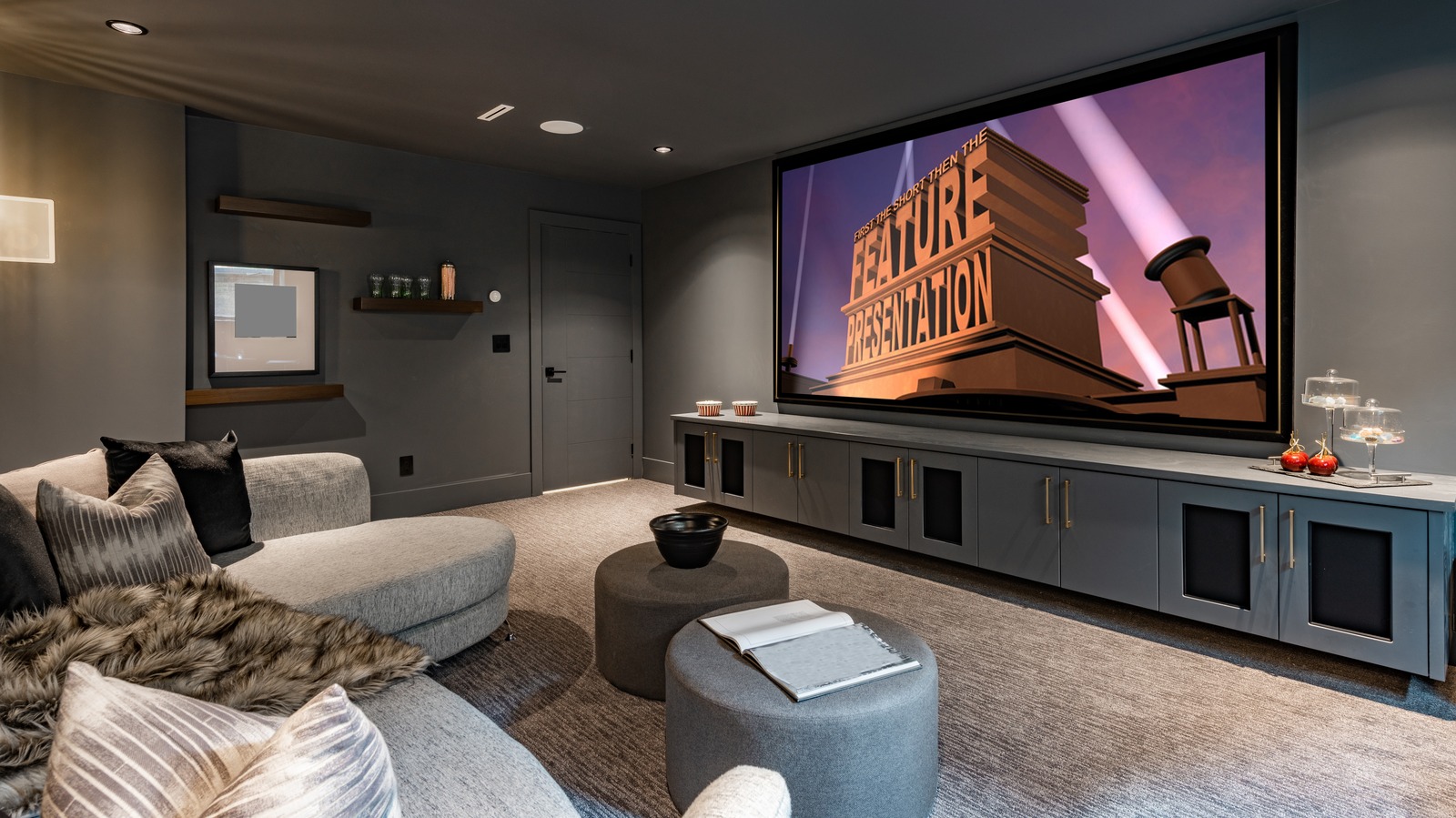Home Theater 101: Every Little Thing You Need to Know for a Motion Picture Experience in your home
Developing a home cinema that equals the cinematic experience of an industrial theater involves mindful consideration of multiple elements, including display option, audio systems, and room layout. Each aspect plays an essential function in accomplishing the wanted atmosphere and capability. Whether you are contemplating the excellent screen size or the intricacies of surround noise, comprehending these basics is essential. As we check out these crucial elements, it comes to be evident that the choices made can considerably influence your total watching experience, leaving one to contemplate exactly how these choices will certainly form your personal cinema.
Choosing the Right Screen
When establishing a home cinema, picking the appropriate screen can make or damage the viewing experience - home theater installation tampa. The display works as the centerpiece of your setup, affecting photo high quality, checking out angles, and total visual. Trick variables to consider include display type, resolution, and dimension
First, identify the ideal screen size based on your area dimensions and seating range. Next, pick between different display kinds, such as fixed-frame, motorized, or retracting displays, each offering unique advantages.
Resolution is one more important factor. For a really immersive experience, consider a display made for 4K or perhaps 8K web content, ensuring sharpness and clearness. Additionally, consider the screen's gain, which influences brightness and comparison; a greater gain can enhance illumination in well-lit spaces, while a reduced gain may be a lot more appropriate for darker settings.
Picking Sound Equipment
Audio devices is an essential element of any kind of home movie theater system, dramatically enhancing the general watching experience. The choice of audio gear can determine the depth, clearness, and immersion of noise, essential for producing a cinematic environment.
When choosing audio equipment, consider a surround stereo, which usually consists of a receiver, several audio speakers, and a subwoofer. A 5.1 or 7.1 channel system is recommended, where the initial number stands for the speakers and the second the subwoofer, supplying an immersive soundscape. The receiver is the heart of the system, handling sound and video clip signals, and need to sustain modern styles like Dolby Atmos for an improved spatial experience.
Quality speakers are essential; try to find models that provide a balanced sound account with great bass response. Floor-standing speakers can create richer sound, while shelf choices conserve area. Furthermore, consider wireless alternatives for convenience of setup, although wired systems commonly provide exceptional efficiency.

Ideal Seating Arrangements
Developing a perfect home movie theater experience pivots dramatically on optimal seating plans. The plan of seats plays an important role in both convenience and seeing top quality, straight influencing the total motion picture experience.
First, take into consideration the display dimension and viewing distance. A typical guideline is to position seats at a distance around 1.5 to 2.5 times the diagonal size of the screen. This makes certain an immersive experience without stressing the eyes.
Next, elevation is crucial. If your seats is in a tiered format, the back rows should be more than the front to stay clear of visit the site blockages. For flat seating, guarantee that the front row is not also close to the screen, which everyone has a clear line of vision.
Additionally, think about the plan in regards to social dynamics. Team seats can enhance the public experience, while private seats might be preferred for personal watching.

Last but not least, prioritize convenience with ergonomic seating that sustains prolonged watching durations. Integrating reclining chairs or supported seats can dramatically enhance the experience, making the home cinema a preferred destination for both home entertainment and leisure.
Lighting and Ambiance
Effective lighting and ambiance are necessary components of a well-designed home theater, as they dramatically influence the seeing experience. The ideal lights can enhance the cinematic feeling, while poor selections can interfere with it. For optimum outcomes, take into consideration a layered lights approach that includes ambient, task, and accent lights.
Ambient lights offers general lighting, making sure that the room is not totally dark, which can strain the eyes. Dimmer switches are highly suggested, permitting for changes based upon the content being checked out. Job lights, such as wall surface sconces or flooring lamps, provides practical illumination for activities like analysis or browsing the area without interfering with the general environment.
Accent illumination can be used to highlight building features or create focal factors, including deepness and rate of interest to the room. LED strip lights behind displays or along shelves can give a refined glow that enhances the aesthetic experience without overwhelming the audience.
800w.jpg)
Wiring and Installation Tips
A tactical electrical wiring arrangement is crucial for attaining optimum performance in your home theater system. Appropriate wiring not only makes certain high-grade audio additional reading and video signals but also enhances the total visual of your area. Begin by drawing up your format, determining where each component will certainly be put, including your screen, audio speakers, and receiver.
When picking cable televisions, prioritize premium, properly evaluated electrical wiring to reduce signal loss. HDMI wires should be utilized for video clip connections, while audio speaker cord need to match the requirements of your speakers and amplifier. Decide for in-wall rated cables to adhere to safety and security requirements and preserve a clean appearance.

Conclusion
In recap, creating an outstanding home cinema experience calls for cautious consideration of different elements, including display choice, audio devices, seating setups, illumination, and circuitry. Each part plays a vital function in i loved this accomplishing ideal efficiency and atmosphere, inevitably boosting the satisfaction of home entertainment. By prioritizing these factors, a cinematic atmosphere can be successfully duplicated, permitting immersive seeing experiences that match conventional movie theater settings. Focus to detail in each location is important for total contentment.
Developing a home cinema that rivals the cinematic experience of a business theatre includes cautious factor to consider of several elements, including display choice, audio systems, and area format.When setting up a home cinema, picking the ideal screen can make or break the viewing experience. Next, choose between different display kinds, such as fixed-frame, motorized, or retracting displays, each offering distinctive advantages. For a genuinely immersive experience, consider a screen developed for 4K or also 8K web content, ensuring sharpness and clarity.In recap, creating an outstanding home theater experience needs cautious consideration of different elements, consisting of screen selection, audio equipment, seating arrangements, illumination, and circuitry.